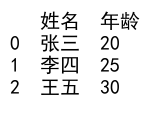在Python里显示中文应该添加什么

在Python中显示中文时,有时候会遇到乱码或者无法显示中文的问题。这主要是因为Python默认的编码方式是ASCII,而中文是使用UTF-8编码的。为了正确显示中文,我们需要在代码中添加一些设置和处理。
1. 设置文件编码
在Python文件的开头,我们可以添加一行注释来指定文件的编码方式为UTF-8,这样可以确保文件中的中文字符能够正确显示。
# -*- coding: utf-8 -*-
2. 使用Unicode字符串
在Python 2.x 版本中,我们可以使用Unicode字符串来表示中文字符,这样可以避免编码问题。
# 使用Unicode字符串
chinese_str = u'深度输出'
print(chinese_str)
代码运行结果:

3. 使用字符串前缀
在Python 3.x 版本中,我们可以使用字符串前缀来表示不同的编码方式,如’b’表示bytes,’r’表示raw string,’u’表示Unicode字符串。
# 使用字符串前缀
chinese_str = '深度输出'
print(chinese_str)
代码运行结果:

4. 使用encode和decode方法
在Python中,我们可以使用encode方法将Unicode字符串转换为指定编码的字节串,使用decode方法将字节串解码为Unicode字符串。
# 使用encode和decode方法
chinese_str = '深度输出'
encoded_str = chinese_str.encode('utf-8')
decoded_str = encoded_str.decode('utf-8')
print(decoded_str)
代码运行结果:

5. 使用sys模块设置默认编码
我们可以使用sys模块来设置Python的默认编码方式,这样可以确保所有的输入输出都按照指定的编码方式进行处理。
import sys
# 设置默认编码为UTF-8
reload(sys)
sys.setdefaultencoding('utf-8')
chinese_str = '深度输出'
print(chinese_str)
6. 使用locale模块设置系统编码
通过locale模块,我们可以设置系统的默认编码方式,这样可以确保Python在处理中文字符时能够正确显示。
import locale
# 设置系统编码为UTF-8
locale.setlocale(locale.LC_ALL, 'en_US.UTF-8')
chinese_str = '深度输出'
print(chinese_str)
代码运行结果:

7. 使用io模块设置标准输入输出编码
通过io模块,我们可以设置标准输入输出的编码方式,这样可以确保在终端中输入输出中文字符时能够正确显示。
import io
# 设置标准输入输出编码为UTF-8
sys.stdout = io.TextIOWrapper(sys.stdout.buffer, encoding='utf-8')
sys.stdin = io.TextIOWrapper(sys.stdin.buffer, encoding='utf-8')
chinese_str = input('请输入中文字符:')
print(chinese_str)
8. 使用chardet模块检测编码
有时候我们无法确定文件的编码方式,可以使用chardet模块来检测文件的编码,然后再进行相应的处理。
import chardet
# 检测文件编码
with open('test.txt', 'rb') as f:
data = f.read()
encoding = chardet.detect(data)['encoding']
# 读取文件并解码
with open('test.txt', 'r', encoding=encoding) as f:
content = f.read()
print(content)
9. 使用codecs模块处理文件编码
通过codecs模块,我们可以指定文件的编码方式来读取和写入文件,这样可以确保文件中的中文字符能够正确显示。
import codecs
# 写入文件并指定编码
with codecs.open('test.txt', 'w', encoding='utf-8') as f:
f.write('深度输出')
# 读取文件并指定编码
with codecs.open('test.txt', 'r', encoding='utf-8') as f:
content = f.read()
print(content)
代码运行结果:

10. 使用open函数指定编码方式
在Python的open函数中,我们可以指定文件的编码方式来读取和写入文件,这样可以确保文件中的中文字符能够正确显示。
# 写入文件并指定编码
with open('test.txt', 'w', encoding='utf-8') as f:
f.write('深度输出')
# 读取文件并指定编码
with open('test.txt', 'r', encoding='utf-8') as f:
content = f.read()
print(content)
代码运行结果:

11. 使用print函数指定编码方式
在Python的print函数中,我们可以指定输出的编码方式来确保中文字符能够正确显示。
# 指定输出编码
print('深度输出', encoding='utf-8')
12. 使用locale模块设置输出编码
通过locale模块,我们可以设置输出的编码方式,这样可以确保在终端中输出中文字符时能够正确显示。
import locale
# 设置输出编码为UTF-8
locale.setlocale(locale.LC_ALL, 'en_US.UTF-8')
print('深度输出')
代码运行结果:

13. 使用sys.stdout重新设置输出编码
通过sys.stdout重新设置输出的编码方式,这样可以确保在终端中输出中文字符时能够正确显示。
import sys
# 重新设置输出编码
sys.stdout = open(sys.stdout.fileno(), mode='w', encoding='utf-8', buffering=1)
print('深度输出')
代码运行结果:

14. 使用subprocess模块处理外部命令输出
通过subprocess模块,我们可以处理外部命令的输出,这样可以确保在终端中输出中文字符时能够正确显示。
import subprocess
# 执行外部命令并获取输出
output = subprocess.check_output(['ls'], shell=True)
print(output.decode('utf-8'))
15. 使用logging模块输出中文日志
通过logging模块,我们可以输出中文日志,这样可以确保日志中的中文字符能够正确显示。
import logging
# 配置日志输出格式
logging.basicConfig(level=logging.INFO, format='%(asctime)s - %(message)s')
# 输出中文日志
logging.info('深度输出')
16. 使用tkinter模块显示中文界面
通过tkinter模块,我们可以创建GUI界面并显示中文字符,这样可以确保界面中的中文字符能够正确显示。
import tkinter as tk
# 创建窗口并显示中文字符
root = tk.Tk()
label = tk.Label(root, text='深度输出', font=('Arial', 12))
label.pack()
root.mainloop()
17. 使用matplotlib绘制中文图表
通过matplotlib库,我们可以绘制图表并显示中文字符,这样可以确保图表中的中文字符能够正确显示。
import matplotlib.pyplot as plt
# 绘制图表并显示中文字符
plt.plot([1, 2, 3, 4], [1, 4, 9, 16])
plt.xlabel('深度输出')
plt.show()
18. 使用Pandas显示中文表格
通过Pandas库,我们可以创建数据表格并显示中文字符,这样可以确保表格中的中文字符能够正确显示。
import pandas as pd
# 创建数据表格并显示中文字符
data = {'姓名': ['张三', '李四', '王五'],
'年龄': [20, 25, 30]}
df = pd.DataFrame(data)
print(df)
代码运行结果:

19. 使用Flask显示中文网页
通过Flask框架,我们可以创建网页并显示中文字符,这样可以确保网页中的中文字符能够正确显示。
from flask import Flask
app = Flask(__name__)
@app.route('/')
def hello_world():
return '深度输出'
if __name__ == '__main__':
app.run()
20. 使用Django显示中文网站
通过Django框架,我们可以创建网站并显示中文字符,这样可以确保网站中的中文字符能够正确显示。
# Django项目中的视图函数
from django.http import HttpResponse
def index(request):
return HttpResponse('深度输出')
通过以上方法,我们可以在Python中正确显示中文字符,无论是在终端、GUI界面、图表、网页还是日志中,都可以轻松处理中文字符的显示问题。
 极客笔记
极客笔记